Powered by

Kirq, a quantum communication testbed
In the face of the rapid evolution of quantum computing, sensitive data circulating on telecommunications networks are more vulnerable than ever. Quantum cryptography, which ensures the inviolability of exchanges, and other approaches such as post-quantum cryptography, are promising solutions. However, the implementation of these technologies requires quantum networks capable of generating, conveying, storing, and synchronizing quantum information, making quantum communication an essential pillar for securing our digital infrastructures.
It is in this context that Kirq was born. Kirq is a testbed that combines quantum, post-quantum, and classical technologies. Its goals is to accelerate the development of products and technologies and prepare organizations for their adoption. The purpose of the testbed is to provide a platform to test and validate new quantum technologies or systems under real or near-real conditions. Kirq thus contributes to reducing costs and minimizing the risks incurred by compagnies in the implementation of emerging technologies.

Kirq, a unique approach
Kirq is based on four fundamental principles:
Open : Whether you are a large company, an SME, a start-up, a research center, a university, a governmental, local or international institution, Kirq can be your quantum communication experimentation playground.
Scalable : Kirq‘s quantum and classical systems are deployed on terrestrial optical fiber networks and short and long-range wireless networks (satellites, point-to-point optical links, 5G cellular), evolving towards an entanglement distribution network.
Adaptable : Kirq is a versatile infrastructure, offering several several poles, multiple possible topologies, and diversified platforms. This allows adjusting the testbed to the specific needs and requirements of users and the diversity of projects.
Collaborative : Kirq encourage networking and collaboration between experts, researchers, developers, and testbed participants, whether they are specialists or non-technical stakeholders.
Kirq, a unique approach
Multi-pole infrastructure: appropriate to the users proximity
In its initial phase, Kirq is deployed on three distinct poles located in three key cities: Sherbrooke, Montreal, and Quebec. This approach capitalyses on the presence of local expertises and potential users and offers a wide diversity of service offering.
Multi-node topology: autonomy and flexibility within each pole.
Each Kirq pole is designed to operate as an autonomous network. Several sites will be interconnected to form one or more network configurations. The approach allows access optical fiber links of various lengths and characteristics. Three-note tolopogies are planned in each pole during the initial phase. Other nodes will be added depending on the business cases.
Supplier mix: an asset for the versatility of the testbed
Hybrid approach: a combination of classical and quantum
The test bench plans to integrate classical and quantum communication modes such as:
• Quantum key distribution networks (QKD)
• Post-quantum cryptography algorithms (PQC)
• Integration software of standard protocols (VPN, TLS, IP/SEC, etc.) with QKD networks
• Interfaces to classical optical transmission networks
• Interconnection with wireless networks, short and long haul (satellite, cellular, 5G)
• A quantum entanglement distribution network
In the initial phase, the testbed relies on terrestrial optical fiber networks to interconnect the network nodes.
Kirq, multiple use cases
Kirq is aimed at…
- Companies, to be able to experiment with use cases and application cases based on emerging quantum communication technologies.
- Product developers, system integrators, and researchers, to have a testing environment to validate their technologies and solutions for commercialization purposes.
- Technology providers, to demonstrate the value of products and services to potential users/customers under real-world conditions.
Quantum key distribution (QKD) is relevant for securely transmitting sensitive information over a public channel. By establishing a secure cryptographic key using QKD, two parties can communicate without fear of interception or eavesdropping. Among others, QKD is applicable in the following cases:
- Financial transactions
- Governmental applications (for example, exchange of medical records)
- Public security and military applications
- Internet of Things (IoT) security
- Protection of critical infrastructures (ports, water distribution, energy)
- Supply chains of complex manufactured products
Simple usage modalities
To participate in Kirq’s testbed, you just need to follow a few steps:
Submit a description of your project to identify the necessary resources for its implementation on the testbed.
Sign a User Terms and Conditions document defining the rules of use of the testbed.
The Kirq team then takes care of programming, preparation, and access to the facilities. *
*Fees apply depending on the duration of the project and the features and resources used for the project.
Numana, project manager of the Kirq testbed
Numana is the project manager of the testbed and ensures its operation and reach out plans. The testbed equipment is partly owned by Numana, others may belong to partners.
Numana has set up an advisory committee composed of experts and representatives from each hub of the testbed to guide the development and evolution of Kirq.
Strategic partners
Collaborators/suppliers

